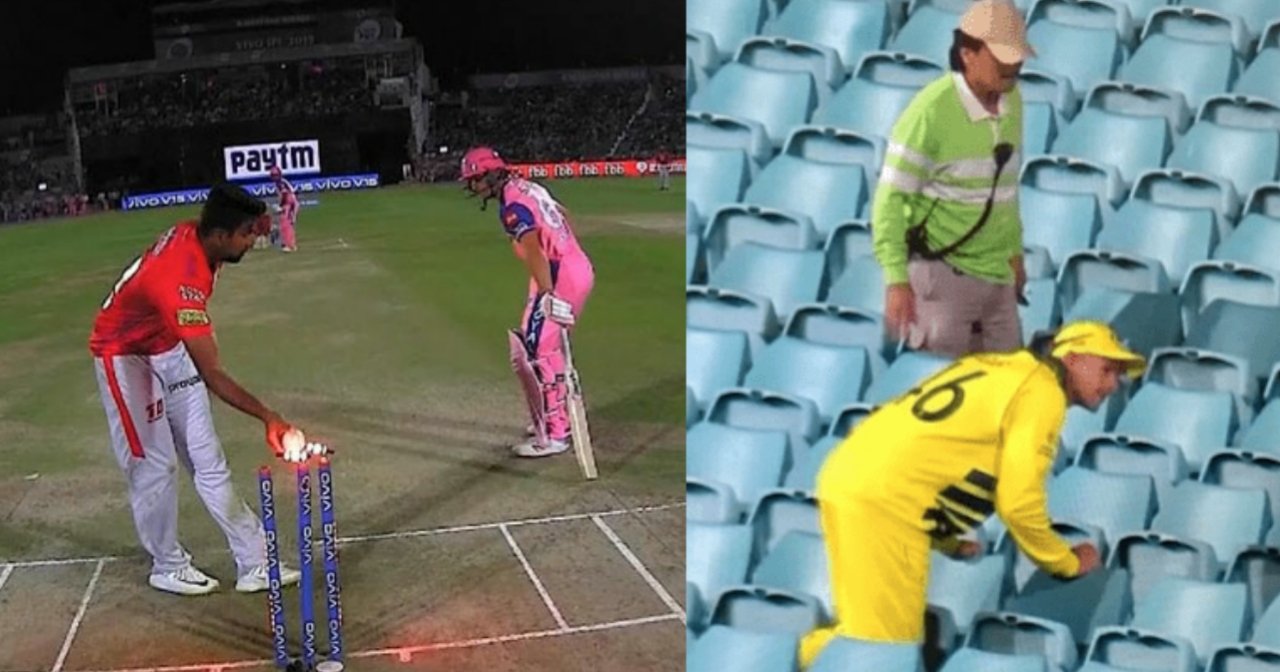
Cricket is a game that has often been complicated with some of its lesser-known rules. It is only human to tend to forget some of these rules. In the fierce competition between the bat and ball, generally, some laws of the game are not noticed by either of the teams. Not even some of the fans who ardently and religiously follow the game of cricket might be knowing some of these rules.
The Marylebone Cricket Club (MCC), however, have explained each and every rule with proper explanation in their rule book and some of these lesser-known rules come into play in a few games of cricket. Here we have a look at five such rules that despite the advancement in technology, might be unknown to people who diligently follow the game.
1. Lost Ball
With the kind of power-hitters on display in modern-day cricket, especially in the shortest format of the game, balls getting lost is turning out to be the new normal. The likes of Chris Gayle, Andre Russell, AB de Villiers, etc. have been guilty of having lost many balls, thanks to their towering sixes that have sometimes landed either on the roof or directly out of the stadium.
If the ball is lost in such a situation, the fielding side can call it a ‘lost ball’. The delivery is then called dead and the umpires ask for another ball that is similar to the number of overs old, the previous ball was. The batsmen are then awarded runs according to the number of runs that they have managed to score on the previous ball. If the batsman has not hit the lost ball, the runs go down as extras.
2. No Appeal
There have been many occasions in cricket where due to different noises like that made by the crowd, sometimes the ball edged by the batsman is not heard by the umpire and the batsman are ended up being given not out. Although DRS has solved that issue as players can review the umpire’s decision, it is a completely different case when the players on the field themselves do not appeal for a decision.
According to the law made, a batsman cannot be given out by the umpire even if he is, until the fielding team appeals for it. The batsman however, has the freedom to walk away showing sportsman spirit. However, it is crucial for the fielding team to appeal. Else, the umpire is well within his rights to call the batsman back and declare the ball as a dead ball.
3. Mankading
The term “Mankading” came into existence for the first time when an Indian player Vinod Mankad dismissed an Australian batsman Bill Brown during a Test match in 1947. The rule states that the batsman at the non-striker’s end can only leave his crease once the bowler has released the ball.
However, for gaining a bit of a start, batsmen generally tend to move out of their crease a bit earlier than usual. Since Mankading is not considered by many to be in the spirit of the game, it was not seen happening frequently. However, the likes of Ravichandran Ashwin Mankading Jos Buttler in the IPL 2019 season has again sparked a debate on whether Mankading is fair or not. That being said, it is certainly within the rules of the game.
4. Restricting an injured player
In earlier days, players used to take advantage of the loophole in the rules and used to sit out while fielding for a considerable amount of time under the excuse that they were suffering from an injury. Thus, a rule was made that the umpire had to be informed by the players the genuine reason for them leaving the field.
If a player leaves the field for more than 15 minutes, he won’t be allowed to bat/bowl for that much amount of time in the next innings of the game. This rule considerably reduced the players taking advantage of the rule. But this is where the grey area sets in. In 2007, Sachin Tendulkar had left the field for 18 minutes in a Test against South Africa. While batting, India lost two quick wickets, but since the 18 minutes were not done, Tendulkar was not allowed to walk-in at his preferred No.4 position.
5. Handling the ball
Handling the ball is something that has always been a grey area as far as the law was concerned. While the law says that if a batsman tries to handle the ball intentionally, the umpire is well within his rights to adjudge him out. However, sometimes it isn’t difficult to judge whether the batsman has handled the ball intentionally. He might have handled it to prevent an injury by the ball coming towards him. These things might make it difficult for an umpire to give an impartial decision.



